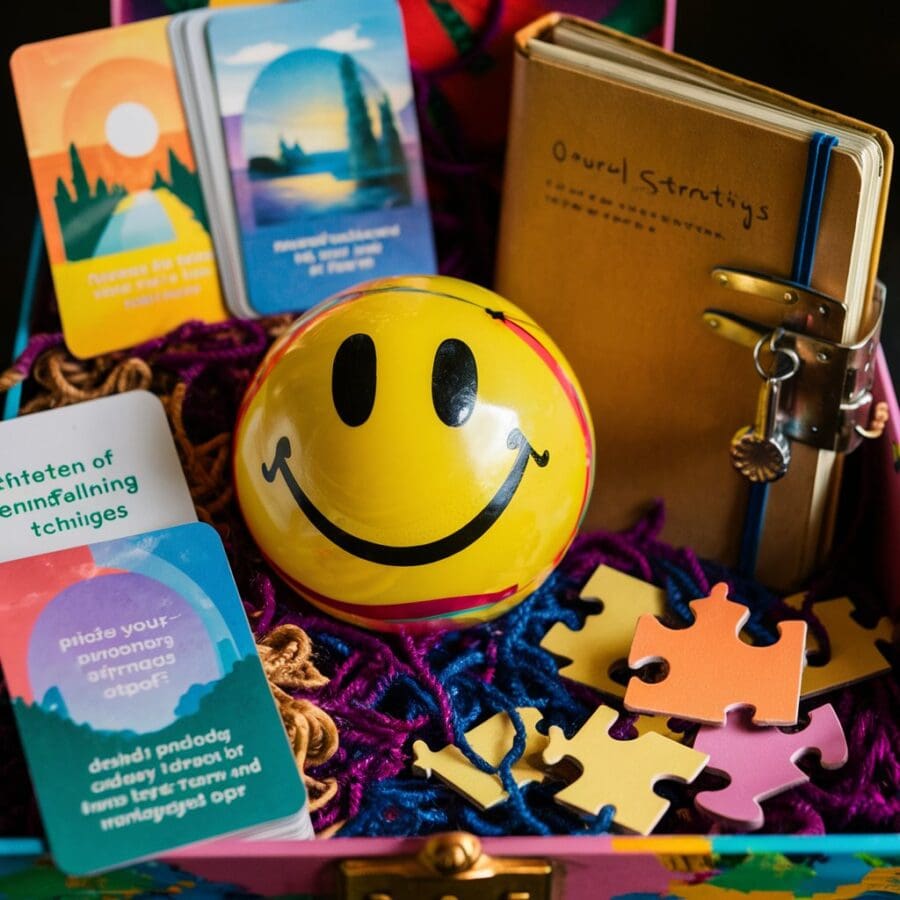Ways To Help A Child Regulate Their Emotions
Have you ever noticed your child getting overwhelmed by their emotions? It can be tough for them, but guess what? I’ve got some helpful tips just for you!
Today, I want to share simple ways to help your child regulate their emotions.
Yep, you’ll be their emotion superhero! So whether they’re feeling mad, sad, or super excited, these tips will come in handy.
Heads up: This post may include affiliate links. As an Amazon Associate, I earn from qualifying purchases—at no extra cost to you. Full privacy policy and disclosure here.
Understand the Child’s Emotional Development
A crucial first step in helping children regulate their emotions is understanding the emotional development process that they go through as they grow.
It’s important to remember that emotions are a natural and necessary part of human experience, and that children are not always able to regulate their emotions as well as adults.
Check out Positive Parenting Solutions’ online course – only $9.99 a month!

6 Ways To Help Your child Regulate Their Emotions
Model emotional regulation
Modeling emotional regulation involves demonstrating how to manage emotions in a healthy way.
When you handle your own emotions calmly and effectively, children observe and learn from your behavior.
For example, when you feel frustrated, you might say, “I’m feeling frustrated right now, so I’m going to take a few deep breaths to calm down.”
By verbalizing your process and showing how you cope with strong emotions, you provide a practical example for children to emulate.
This helps them understand that it’s normal to have emotions and teaches them constructive ways to deal with them.
Create a safe and open environment
Creating a safe and open environment involves fostering a space where children feel comfortable expressing their emotions without fear of judgment or punishment.
It’s about establishing trust and empathy in your relationship with the child.
By encouraging open communication and actively listening to their feelings, you validate their experiences and help them feel understood.
When children know they can share their emotions freely, they’re more likely to seek support and guidance when needed.
This supportive environment lays the foundation for healthy emotional development and strengthens the bond between you and the child.

Teach emotional vocabulary
Teaching emotional vocabulary involves introducing children to a wide range of words to describe their feelings.
By expanding their emotional vocabulary, you empower them to articulate their emotions more precisely.
This helps them better understand and communicate their inner experiences, leading to improved self-awareness and emotional regulation.
Through discussions and activities, you can teach children words like “frustrated,” “excited,” or “anxious,” enabling them to express themselves more effectively and seek appropriate support when needed.
Use calming techniques
Using calming techniques entails teaching children various strategies to manage their emotions when they feel overwhelmed.
These techniques, such as deep breathing, counting to ten, or mindfulness exercises, help children regain control of their emotions and reduce stress levels.
By practicing these techniques regularly, children learn to self-soothe and cope with challenging situations more effectively.
Calming techniques empower children to take an active role in regulating their emotions, promoting a sense of independence and resilience in handling difficult emotions.
Encourage problem-solving skills
Encouraging problem-solving skills involves guiding children through the process of identifying and addressing the underlying causes of their emotions.
By teaching them to approach emotional situations with a problem-solving mindset, you empower them to navigate challenges constructively.
Help children identify the problem, brainstorm possible solutions, consider the consequences of each option, and make a decision.
By developing these critical thinking and decision-making skills, children become more adept at managing their emotions and resolving conflicts in a positive manner.

Establish routine and consistency
Establishing routine and consistency involves creating predictable and structured environments for children.
Consistent daily routines, such as regular mealtimes, bedtime rituals, and activities, provide a sense of stability and security for children.
Predictability helps reduce anxiety and uncertainty, allowing children to feel more in control of their environment and emotions.
By maintaining consistent routines, you establish a foundation for emotional regulation, as children know what to expect and can anticipate transitions more smoothly.
Consistency also reinforces expectations and boundaries, promoting a sense of order and responsibility in children’s lives.
Bottom Line
In conclusion, helping your child regulate their emotions is a journey that requires patience, understanding, and consistent effort. By implementing the six strategies outlined above, you can empower your child to navigate their emotions more effectively and develop essential skills for emotional intelligence.
Understanding your child’s emotional development is key to providing the support they need at each stage. Creating a safe and open environment fosters trust and communication, allowing your child to express their feelings without fear. Teaching emotional vocabulary equips them with the language to articulate their emotions accurately, while using calming techniques helps them manage overwhelming feelings in healthy ways.
Encouraging problem-solving skills empowers your child to address the root causes of their emotions and find constructive solutions. Finally, establishing routine and consistency provides a stable foundation for emotional regulation, helping your child feel secure and in control.
By being their emotion superhero and implementing these tips, you can support your child in understanding, expressing, and managing their emotions, setting them on a path towards lifelong emotional well-being.

I can’t thank you enough for sharing these strategies! My child has been struggling with anxiety and it’s been really tough to know how to help them regulate their emotions. These tips are such a great reminder that small changes can make a big difference, and that it’s possible to help your child develop the skills they need to manage their emotions effectively.
This post is such a timely reminder of how important it is to prioritize our children’s emotional wellbeing. In today’s fast-paced world, it’s easy to get caught up in the day-to-day demands of parenting and forget to check in with our kids about how they’re feeling. These tips offer a great roadmap for how to support your child in developing healthy emotional regulation skills.
I appreciate that this post emphasizes the importance of empathy and validation in helping children regulate their emotions. It’s so easy to dismiss a child’s feelings or try to talk them out of how they’re feeling, but these tips offer a more compassionate and effective approach. I’m definitely going to try some of these techniques with my own children.
I love these tips! As a parent, it can be so challenging to help your child navigate their emotions, especially when they’re feeling overwhelmed or upset. I appreciate the practical advice and concrete strategies offered in this post – I feel like I have some new tools in my parenting toolbox now!
I love these tips! As a parent, it can be so challenging to help your child navigate their emotions, especially when they’re feeling overwhelmed or upset. I appreciate the practical advice and concrete strategies offered in this post – I feel like I have some new tools in my parenting toolbox now!